
Topics
Guests
- Charles Hanleyspecial correspondent for the Associated Press who has written extensively about the Korean War. He was part of the AP team in 2000 that won the Pulitzer Prize for investigative journalism for their coverage of the massacre at No Gun Ri. He is co-author of the book The Bridge at No Gun Ri: A Hidden Nightmare from the Korean War.
South Korea’s Truth and Reconciliation Commission is concluding the US military indiscriminately killed large groups of South Korean civilians during the Korean War in the early 1950s. The Commission has more than 200 cases on its docket, based on hundreds of citizens’ petitions recounting US bombing and strafing runs on South Korean refugee gatherings in 1950 and ’51. We speak with Pulitzer Prize-winning Associated Press reporter Charles Hanley, co-author of The Bridge at No Gun Ri: A Hidden Nightmare from the Korean War. [includes rush transcript]
Transcript
AMY GOODMAN: As we look back at the Rwandan genocide more than a decade ago to killings in another part of the world, to killings in Korea, and what it means for President Bush’s trip to South Korea. Anjali?
ANJALI KAMAT: President Bush heads to China today for the last leg of his three-nation trip to Asia. The press has been focusing heavily on his decision to visit Beijing for the opening ceremony of the Summer Olympic Games and criticism of China’s human rights record. But there has been hardly any coverage of another story, this one out of South Korea, where the President held summit talks on Wednesday.
It was revealed this week that South Korea’s Truth and Reconciliation Commission is concluding the US military indiscriminately killed large groups of South Korean civilians during the Korean War in the early 1950s.
The commission has more than 200 cases on its docket, based on hundreds of citizens’ petitions recounting US bombing and strafing runs on South Korean refugee gatherings in 1950 and ’51. The citizens’ petitions have accumulated since 1999, when the Associated Press confirmed the 1950 refugee killings at No Gun Ri in 1950, where some 400 civilians, mostly women and children, were killed by US troops.
Concluding its first investigations, the commission is urging the South Korean government to seek US compensation for victims. South Korean legislators have also asked a US Senate committee to join them in investigating declassified evidence that American ground commanders had adopted a policy of deliberately targeting refugees.
AMY GOODMAN: Charles Hanley is a special correspondent for the Associated Press who has written extensively about the Korean War. He was part of the AP team that won the Pulitzer Prize for investigative journalism in 2000 for their coverage of the massacre at No Gun Ri. He is co-author of the book The Bridge at No Gun Ri: A Hidden Nightmare from the Korean War. He joins me now in the firehouse studio, Anjali and I, to talk about the relevance of this today. We’re talking more than half a century later.
Can you talk about what is being demanded and how you discovered what you did back in, what, ’99?
CHARLES HANLEY: Well, what happened in 1999 was actually a contemporary news story as much as a piece of history, because at the time, in the 1990s, the survivors of the No Gun Ri killings — and the survivors estimate that about 400 refugees were killed there, mostly women and children, by the US Army and the US Air Force — those survivors finally were able to bring their stories forth and were demanding an investigation, an apology, compensation, some sort of token of acknowledgement of culpability.
AMY GOODMAN: Can you describe it for us? Just give a picture. Most people, I think, in this country, especially younger people, hardly even know what the Korean War was, let alone that US troops were there.
CHARLES HANLEY: Well, what happened was, after the division of Korea in 1945 by the US and the Soviet Union, the effort to unite the two Koreas failed, and in June of 1950, the North Koreans invaded. The Communist North Koreans invaded South Korea. This sent large numbers of South Korean refugees moving farther and farther south, as the North Koreans advanced. And the United States very hastily decided to intervene with troops who were really unprepared for what they were about to face. And one thing led to another — rumors and fears and panic among the US troops — such that they became convinced that every Korean was their enemy, in effect — many of the troops and many of the commanders.
And so, at this place called No Gun Ri, which is a tiny village in central South Korea, the people from two nearby villages had been chased by US troops to head farther south, and they ran into a battalion of the 7th Cavalry Regiment. First, what happened to these people was that they were strafed and bombed by US airplanes, warplanes. And secondly, then they were trapped and fired upon for three days, trapped around and under a railroad bridge. And the survivors, as I say, estimate that 400 of them were killed.
At the time, we discovered in our research that there were documented orders to fire on refugees. In fact, the most important document that has emerged was discovered by the American historian Sahr Conway-Lanz and disclosed only recently. It was a letter from the US ambassador in South Korea at the time, John Muccio, writing back to the State Department in Washington, saying that the US Army has adopted a policy of firing on refugees that approached their lines despite warning shots and such. And so, this was, in essence, clearly a policy that was countenanced.
AMY GOODMAN: We’re talking to Charles Hanley, special correspondent for the Associated Press, Pulitzer Prize-winning journalist. We’ll come back to this conversation in a minute.
[break]
AMY GOODMAN: Our guest is Charles Hanley, a Pulitzer Prize-winning special correspondent for the Associated Press, written extensively about the Korean War and was co-author of The Bridge at No Gun Ri. Anjali?
ANJALI KAMAT: Charles Hanley, you mentioned Ambassador John Muccio during the Korean War. Can you talk about his role a little bit more? And also, the US Army concluded an investigation after your report in 2001. Did they mention John Muccio at all?
CHARLES HANLEY: No. The US Army conducted a fourteen-month investigation of the No Gun Ri incident, after our reporting confirmed it. The Army previously had rejected the allegations.
But we discovered, only two years ago — or last year, actually — that the Army, during that investigation, did indeed find the Muccio letter, the letter that reported to Washington that the Army had adopted this policy of firing on South Korean refugees. In that letter, by the way, which was written to Dean Rusk, later Secretary of State — and Rusk was then the Assistant Secretary for East Asia — in that letter, Muccio said this policy is bound to have repercussions if it becomes known. Well, of course, it did not become known in the chaos and the journalistic blindness, actually, in 1950. The Army found the letter, we later confirmed, and did not report its existence. This letter would have confirmed a policy of shooting at refugees.
The Army finally told us and told the South Korean government it did not report the existence of the Muccio letter, because they found, in essence, it wasn’t relevant to this investigation of a mass killing of refugees. That is patently ridiculous. The Army actually told us then that, well, it discussed a proposed policy and not an actual policy. That, too, is just plain untrue. The letter very clearly says this was decided last night.
AMY GOODMAN: And one of the powerful parts of your expose was actually speaking to US soldiers.
CHARLES HANLEY: Yes. This was the key to the whole No Gun Ri story, was to locate — and this was the most difficult part of the research and of the reporting — was to locate the soldiers who were there. Although once we located, were able to zero in on the right unit — that was the real problem — fairly soon we found that the men needed to talk about this and needed to get it off their chests, because at an advanced age, this had been weighing on them for their whole lives.
AMY GOODMAN: Describe what they described.
CHARLES HANLEY: What they described was a scene of pure madness, in the view of some of them. One, who was not involved but was observing it from a distance, said that he looked at it and just said, “What is going on? Stop this! Stop this!” Others refused to fire when they were ordered to fire, but —-
AMY GOODMAN: On refugees.
CHARLES HANLEY: On refugees. But, obviously, a good number of them did fire with machine guns and automatic rifles. And as I say, this went on for three days. The Army report in 2001 contended that this was, quote, “not deliberate,” unquote, which, again, is obviously refuted by clear facts, the fact that it went on for three days and was not stopped, and now on the record. We’ve accumulated at least nineteen examples of orders to fire on refugees during this period, during several weeks in mid-1950.
ANJALI KAMAT: The orders to kill people in white?
CHARLES HANLEY: And this was another aspect of this whole story, that the Air Force, in particular, had it in its head that people in white could be enemy threat.
AMY GOODMAN: Wearing white clothes?
CHARLES HANLEY: Wearing white clothes. Now, most Koreans, civilians, wore white clothes during this period. But this all stemmed from the fact that the rumors were that North Korean soldiers were infiltrating the American lines in civilian clothes, meaning in white. And this is what happens in war. You let loose the dogs of war, and they go wild, and you just cannot control it. And so, these jet pilots flying over from bases in Japan, at their intelligence briefings, were told that people in white could be dangerous, and sometimes the air observers would actually target, send them to targets who were refugee columns walking down the roads, because they were wearing white.
AMY GOODMAN: Was this being raised when President Bush went to South Korea? There were mass protests around the issue of mad cow and beef imports being allowed into South Korea. What about No Gun Ri?
CHARLES HANLEY: To my knowledge, of course, officially, the new conservative government certainly would not raise the issue. The Truth and Reconciliation Commission that is working right now, and will be for another couple of years, at least, was established under the previous liberal government of President Roh. President Lee’s current government certainly, I’m sure, even behind closed doors, would not raise the issue. I suspect some of the protesters in the streets may be holding up placards mentioning No Gun Ri and related incidents, but it seems to be overshadowed by the beef dispute and others.
ANJALI KAMAT: Can you talk about the mass execution of political prisoners and leftists in 1950 and the US role in that? How did that come up at the Truth and Reconciliation Commission?
CHARLES HANLEY: This is a remarkable chapter of twentieth century history that has been hidden largely for decades. Of course, it was whispered about. South Koreans -— older South Koreans know about these things, including even No Gun Ri, but they dared not talk about them publicly during the dictatorships of Syngman Rhee and Park Chung-hee and others until the 1980s, 1990s. And now, the Truth and Reconciliation Commission finally has sort of a government imprimatur that it can apply to these investigations and stories, and people can finally face up to what happened.
And what happened was that, in a matter of a few weeks in mid-1950, as the North Koreans pushed down the peninsula, Syngman Rhee’s right-wing government rounded up tens of thousands of suspected leftists, including tens of thousands of political prisoners being held already, and simply took them out into the countryside and shot them in the head and dumped them into mass graves. The commission believes that a very conservative estimate of the number killed is 100,000. They think it may have been more like 200,000 or even 300,000 people killed, and they are now — for the second summer season, they are excavating mass graves at several sites around South Korea. The reason, the ostensible and immediate reason, for these executions was to prevent the North Koreans from freeing these people, who would then reinforce their army or their programs in various ways as they took over South Korea.
The US role is a bit murky and ambiguous. However, the most interesting and unique document that we have found so far is one that shows that an American colonel, an adviser to a South Korean army division, gave his approval to the proposed execution of 3,500 political prisoners in Pusan, in the southern port of Pusan, and subsequent to that, thousands of political prisoners were indeed killed in Pusan. But otherwise, the US embassy, Ambassador Muccio and his staff, at times expressed disapproval to South Korean officials about these summary — mass summary executions, which, by the way, at times included many women and even children. And, however, General MacArthur, who was the overall commander, was said — according to the declassified record, was said to feel that this was an internal matter of the South Korean government, even though he had formal control over the South Korean forces that were carrying out these executions.
AMY GOODMAN: Could cases like No Gun Ri spark demands for reparations from the United States?
CHARLES HANLEY: Well, this is the key question, of course. The US Army, in its 2001 investigation of No Gun Ri, acknowledged in a footnote that it had learned about other incidents, which, of course, now we’re coming out more openly formally, and indicated that it would not be investigating the other incidents, because this would simply open up Pandora’s box, so to speak, not just in Korea, where we now know of at least 200 incidents, but there are other places, such as Vietnam.
AMY GOODMAN: I want to thank you very much, Charles Hanley, for joining us, special correspondent for the Associated Press, written extensively on the Korean War. He’s co-author of the book The Bridge at No Gun Ri: A Hidden Nightmare from the Korean War. And for our radio listeners, you can go to our website at democracynow.org to see the photos that Charles Hanley was just describing, the killings in South Korea.

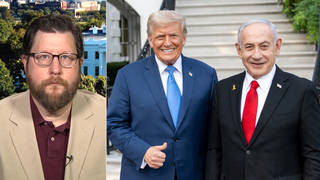
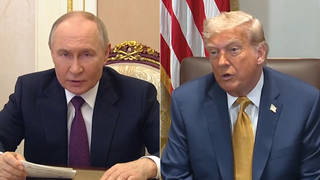
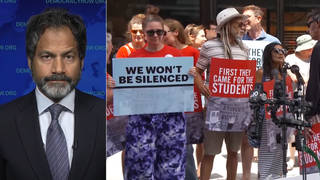
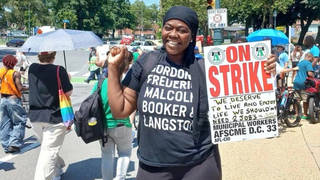
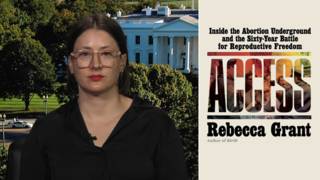
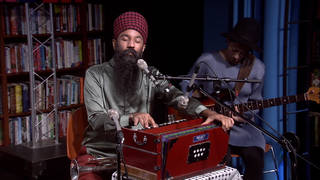
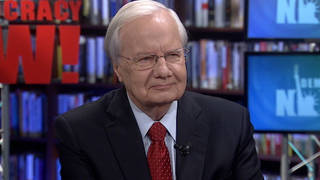
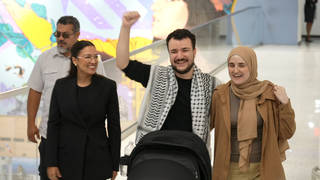

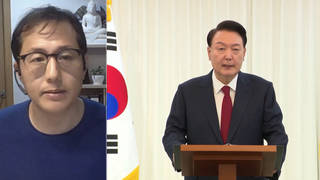

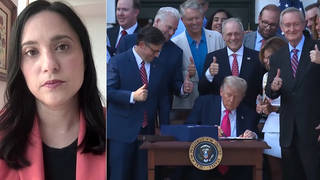
Media Options